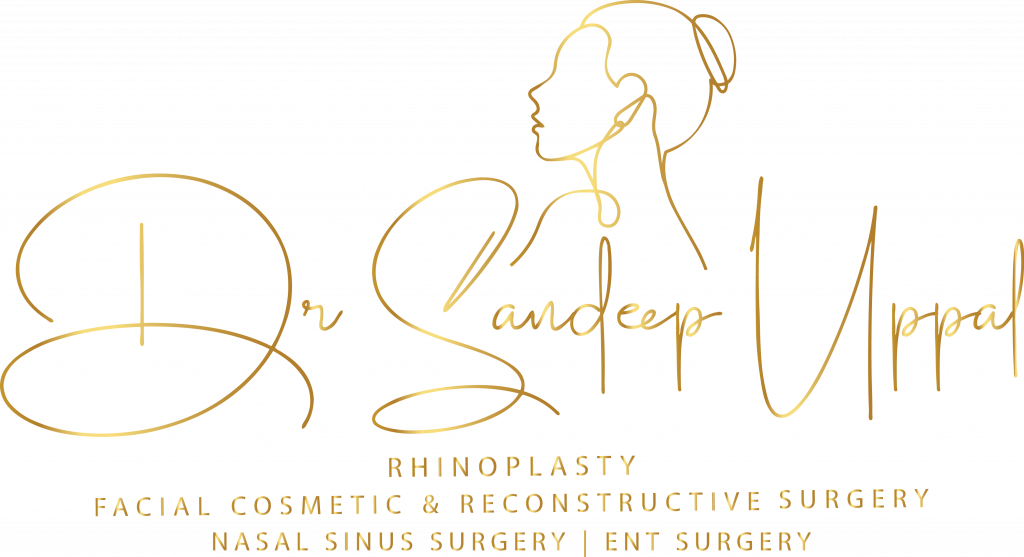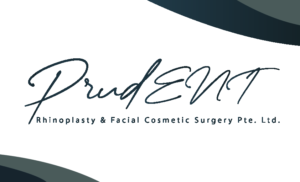ENDOSCOPIC BROW LIFT
Dr Sandeep and his team are specialists in advanced facial rejuvenation techniques, including endoscopic brow lifts. This minimally invasive procedure has gained popularity for its effectiveness in elevating the brow and reducing the appearance of forehead wrinkles, while also offering quicker recovery times compared to traditional methods. Here is a detailed look at how Dr Sandeep and his team typically perform an endoscopic brow lift:
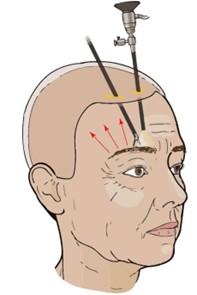
PROCEDURE
PREOPERATIVE CONSULTATION
The journey begins with an in-depth consultation where Dr Sandeep assesses the patient’s facial structure, skin quality, and aesthetic goals. A detailed medical history is taken to determine your suitability for surgery. This is followed by a thorough physical and aesthetic evaluation to plan surgery. This session is crucial for customising the surgical approach and for setting realistic expectations.
INFORMED CONSENT
Risks, benefits, and alternatives are discussed in detail with you, and written informed consent is obtained.
ANESTHESIA
Prior to the procedure, anaesthesia is administered to ensure the patient’s comfort. The options usually include local anaesthesia with sedation or general anaesthesia, based on the patient’s medical history and Dr Sandeep’s recommendations.
INCISION AND ENTRY POINTS
In an endoscopic brow lift, Dr Sandeep makes several small incisions, typically three to five, hidden within the hairline. This approach minimises visible scarring.
INSERTION OF THE ENDOSCOPE
A tiny camera (endoscope) is then inserted through one of the incisions, allowing Dr Sandeep and his team to have a clear view of the underlying muscle and tissue structure on a monitor.
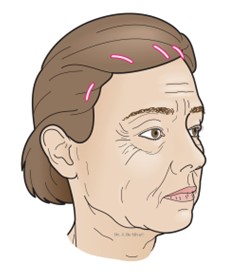
used for endoscopic browlift.
TISSUE AND MUSCLE MANIPULATION
Using special instruments inserted through the other incisions, the forehead tissue is carefully lifted, and the muscles that cause frown lines may be weakened or removed. The brows are then repositioned to achieve a more youthful and refreshed appearance.
FIXATION
Once the desired elevation and positioning are achieved, the tissue may be secured using anchors and sutures to maintain the lift.
CLOSURE
The incisions are then meticulously closed with sutures and staples, sometimes surgical adhesive is applied for additional security.
POST-OPERATIVE CARE
Dr Sandeep and his team provide thorough post-operative care instructions, including how to manage swelling and discomfort, and how to care for the incisions to minimise scarring.
FOLLOW-UP
Regular follow-up appointments are scheduled to monitor the healing process and to assess the results. Any concerns or complications are promptly addressed.
By adhering with unwavering dedication to all pre-operative and post-operative instructions, you can ensure your journey towards optimal healing. It remains of utmost significance to attend all scheduled follow-up appointments, ensuring that your recovery is woven seamlessly, and any concerns are addressed with swiftness and in a timely fashion.
ADVANTAGES OF ENDOSCOPIC BROWLIFT
An endoscopic brow lift is a modern approach to traditional brow lifting techniques, offering several advantages over traditional methods. This aligns with Dr Sandeep’s and his team’s focus, making it a preferred choice for many patients.
SUITABLE FOR VARIOUS AGE GROUPS
Can be performed on younger patients who have premature signs of aging or older individuals who want to rejuvenate their appearance. In addition to revitalizing the appearance of the forehead and eyes, the procedure may enhance the upper field of vision in patients with drooping eyelid skin.
MINIMALLY INVASIVE
The procedure requires only small incisions hidden within the hairline, leading to less scarring and quicker healing. Unlike traditional brow lifts, which require a larger incision across the scalp, an endoscopic brow lift involves 3-5 small incisions made behind the forehead hairline.
REAL-TIME VISUALIZATION
During the procedure, a small camera attached to an endoscope (a thin, flexible tube with a light and camera at the end) is inserted through one of the incisions to guide Dr Sandeep as he repositions the tissues and muscles in the forehead and brow area. Dr Sandeep can then see the internal structures of the forehead and brow area on a monitor and make precise adjustments using specialized instruments.
NATURAL-LOOKING RESULTS
The endoscopic technique allows for precise adjustments, leading to more natural and subtle outcomes compared to more invasive methods.
PRESERVATION OF HAIRLINE
Unlike some traditional methods, the endoscopic brow lift doesn’t alter the position of the hairline. This procedure is especially suited for patients with low-to-medium hairlines with lax forehead skin.
LOCAL ANAESTHESIA
The procedure can often be performed under local anaesthesia, reducing the risks associated with general anaesthesia.
LESS BRUISING AND SWELLING
Smaller incisions result in less post-operative bruising and swelling.
LONG LASTING RESULTS
In Dr Sandeep’s experienced hands, the results are as long-lasting as those achieved through more invasive techniques.
REDUCED RECOVERY TIME
Most patients experience a faster recovery compared to traditional brow lift methods, often resuming normal activities within a week.
LOWER RISK OF COMPLICATIONS
The endoscopic approach minimizes the risk of infection, nerve damage, and other complications, thanks to smaller incisions and less tissue manipulation under direct vision.
COMPLEMENTARY TO OTHER PROCEDURES
Can be easily combined with other facial rejuvenation procedures, such as eyelid surgery or facelifts, for a more comprehensive result.
DISADVANTAGES OF ENDOSCOPIC BROW LIFT
While the endoscopic brow lift offers many advantages, it’s important to understand its limitations as well. Dr Sandeep and his team would typically discuss the following disadvantages during a consultation:
LIMITED LIFTING
The endoscopic method may not provide as dramatic a lift as traditional, more invasive methods like a coronal lift, especially for patients with severe sagging.
NOT SUITABLE FOR ALL
While an endoscopic brow lift offers many advantages, it’s not suitable for everyone. Here are some factors that might make an individual an unsuitable candidate for this procedure:
SIGNIFICANT SKIN LAXITY
Patients with a large amount of excess forehead skin might not achieve the desired results with an endoscopic brow lift. These individuals might require a traditional or open brow lift to remove the excess skin.
VERY HIGH HAIRLINE OR RECEDING HAIRLINE
The incisions for an endoscopic brow lift are made within the hairline. If a patient has a very high or receding hairline, the scars might be more visible.
PROMINENT FOREHEAD CURVATURE
The incisions for an endoscopic brow lift are made within the hairline. The instruments used for the procedure do not allow access to the brow through the hidden incisions if the forehead has prominent curvature, making the procedure unsuitable for such patients.
CERTAIN HAIR TYPES AND STYLES
Individuals with very thin hair, baldness, or certain hairstyles might not be ideal candidates because the incisions, though small, might be more visible.
UNREALISTIC EXPECTATIONS
It’s essential for patients to have realistic expectations about the results of the procedure. Those expecting dramatic changes or results that defy the natural aging process might be unsuitable candidates.
THICK SKULL OR DENSE BONE
The endoscopic brow lift involves the use of small screws or other fixation devices that are anchored to the bone. In individuals with a particularly thick skull or dense bone, it might be challenging to secure these devices.
MEDICAL CONDITIONS
Certain medical conditions, such as uncontrolled diabetes, autoimmune diseases, or conditions that affect wound healing, might make a person an unsuitable candidate for any surgical procedure, including an endoscopic brow lift.
SMOKING
Smoking can impair wound healing and increase the risk of complications. While it doesn’t necessarily rule someone out as a candidate, they would typically be advised to quit well before and after the surgery.
PREVIOUS RADIATION THERAPY
Patients who have had radiation therapy to the forehead or scalp might have compromised blood supply, making them unsuitable candidates due to increased risks of wound healing complications.
ACTIVE SKIN INFECTIONS
Any active infection on the forehead or scalp would need to be resolved before considering surgery.
CERTAIN MEDICATIONS
Some medications can increase the risk of bleeding or interfere with wound healing. It’s essential to discuss all medications, including over-the-counter drugs and supplements, with the surgeon.
POTENTIAL RISKS AND COMPLICATIONS
While endoscopic brow lift is generally considered safer than traditional brow lift techniques, it still carries some risks and potential complications. Some of the risks associated with an endoscopic brow lift include:
ASYMMETRY
There is a possibility of achieving asymmetry between the two eyebrows or forehead areas after the procedure.
SCARRING
Although the incisions used in an endoscopic brow lift are smaller and less visible compared to traditional techniques, there is still a risk of visible scarring especially in patients with thinning or loss of hair.
UNSATISFACTORY RESULTS
While endoscopic brow lift can achieve excellent outcomes for many patients, there is always the possibility that the desired aesthetic result may not be fully achieved or that the patient may be dissatisfied with the results.
NERVE INJURY
The procedure involves working near nerves that control facial sensation and movement. While the risk of nerve damage is lower compared to open techniques, it is still possible to experience temporary or permanent numbness, tingling, or muscle weakness in the forehead or scalp area.
INFECTION
As with any surgical procedure, there is a risk of infection at the incision sites. Proper post-operative wound care and antibiotic prophylaxis can help reduce this risk.
Hematoma and bleeding: There is a potential for bleeding and the formation of hematoma (a collection of blood under the skin) during or after the surgery, this may require drainage.
HAIR LOSS
In some cases, hair follicles near the incision sites may be damaged, leading to temporary or permanent hair loss or thinning in the area.
HAIRLINE IRREGULARITIES
Altering the position of the eyebrows can sometimes affect the hairline, leading to irregularities or unnatural hair growth patterns.
ANAESTHESIA RISKS
An endoscopic brow lift requires anaesthesia, which comes with its own set of potential risks and complications.
To best safeguard oneself from potential pitfalls: It is of paramount importance to engage in a thorough discussion with Dr Sandeep. This will help to inform you of the potential risks and many benefits associated with the endoscopic brow lift, ensuring that your decision is not only informed but also enlightened.
Dr Sandeep has gracefully honed the art and science of endoscopic brow lift and has lectured all over the world on this topic. He uses techniques that are not merely effective but have been tested over time, significantly diminishing surgical risks.
